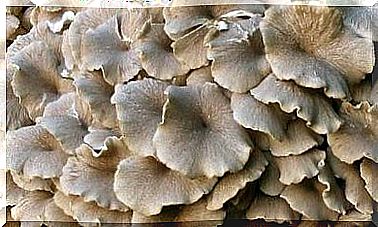Does Any Food Make You Feel Bad?
It is estimated that 10% of Spaniards suffer from some type of food allergy and that around 27% suffer from some intolerance, sometimes without knowing it. Finding out which foods don’t feel good is crucial.

The foods we eat every day do not usually cause problems, at most a slight swelling if one of them is abused, or gastroenteritis in summer when traveling, due to some microbial contamination.
The normal thing is that the body accepts food without difficulties, since it is natural substances. However, for various reasons, it can happen that the immune system identifies common foods as strange, and develops pathological reactions. But it is important to distinguish in the first place between allergy and intolerance.
What are the symptoms of a food allergy?
An allergy is an immune hypersensitivity reaction to one or more environmental substances – the so-called “antigens” -. Its symptoms are inflammation of certain tissues and dysfunction of an organ (lung, intestine …).
Food may contain allergenic components that can induce IgE antibodies and cause more or less intense and generally rapid reactions after ingestion: the response usually begins within about two hours after eating, rarely later. The symptoms that can occur cover a wide range:
- Digestive system: nausea, vomiting, diarrhea, bloating (gas), intestinal malabsorption.
- Respiratory system: rhinitis, asthma, bronchospasm, bronchitis.
- Musculoskeletal system: joint pain, bursitis, low back pain.
- Skin: acne, itching, hives, eczema.
- Immune system: chronic infections (eg otitis).
- Psychological: anxiety, depression, child hyperactivity, lack of concentration, irritability, mood swings, trouble sleeping.
- Miscellaneous: cardiac arrhythmia, fatigue, headache, hypoglycemia, sinusitis. It has even been shown that certain cases of obesity improve by eliminating allergenic foods.
An allergy that affects the mouth and tongue can occur after eating certain fruits or vegetables, which contain substances similar to certain pollens.
What is cross sensitization?
Among the hypersensitivity phenomena, the so-called cross-sensitization between foods can occur : patients allergic to one food also present sensitization to others. This is the case of reactivity to eggs and poultry, or to milk and veal.
In other cases, for example, a person allergic to aspirin (acetylsalicylic acid) may also be allergic to foods rich in salicylates: bananas, cherries, citrus fruits, almonds, peanuts, wine, beer …
What is a food intolerance?
Food intolerance is a different process than allergy, and it is not mediated by the immune system. It is less cumbersome, but at the same time more insidious, since it can cause symptoms apparently unrelated to the digestive system.
Thus, on many occasions the person does not know what the triggering food is. Various components of food can cause pathological reactions. Some exert an action on the blood vessels (biogenic amines).
In some aged cheeses, in pickled fish or in sausages, there are high concentrations of one of these substances: tyramine. Often times, a migraine attack can be caused by eating bananas or cheese, both rich in this substance.
Also phenylalanine, present in red wine, chocolate and cheese, can cause migraine headaches in susceptible people, or redness of the face or hives.
Histamine and enzymes
Certain foods contain histamine or cause its release in the body, giving rise to symptoms that are not strictly allergic but that present clinical similarities. Histamine is found in cheeses, cold cuts, fermented beverages, fish, shellfish, and some vegetables such as tomatoes and spinach.
In some occasions, the intolerance to certain foods is caused by the lack of an enzyme necessary for its digestion. The most frequent is the lack of lactase, essential to digest milk correctly.
Also, to metabolize alcoholic beverages, several enzymes are required, one of the most important is aldehyde-dehydrogenase. People with low levels of this enzyme feel bad even a small alcoholic intake. It should be noted that women have lower levels of this substance, hence their greater difficulty in metabolizing alcohol, especially when they are young.
One key: intestinal permeability
If food allergies or intolerances, even though they are relatively frequent, are not as frequent as might be expected taking into account the high number of possible allergens, it is because the body has various defensive mechanisms.
The digestive system, in addition to allowing the absorption of nutrients, protects the body against allergens through various mechanisms: gastric acidity, enzymes in the pancreas and the mucosa that lines the intestinal wall. On the other hand, the immune system must be balanced and not overly respond to food substances that should be safe.
The good condition of the intestinal wall is essential so that it does not allow the passage of allergenic substances into the blood. Let us remember that food must go through the process of digestion so that the large molecules of proteins, carbohydrates and lipids are broken down into smaller pieces (amino acids, monosaccharides and fatty acids, respectively), which finally cross the intestinal barrier and penetrate into the bloodstream. At this level, the immune system watches so that no foreign substance reaches it.
For various reasons, especially the consumption of industrialized foods and drugs, the intestinal wall can be damaged so that complex molecules that are not well digested pass into the blood.
This triggers inflammatory-type processes in various parts of the body through substances such as histamine, interleukins, and prostaglandins. In turn, the adrenal glands respond by releasing adrenaline, which increases the speed of blood circulation and the pulse rate.
Irritable bowel
Almost a third of the population suffers from a set of symptoms such as stomach pain, flatulence, constipation or diarrhea. If a disease that can cause this condition is not diagnosed, the disorder may be called irritable bowel. It is characterized by nervous irritability of the intestinal mucosa and its inflammation.
Symptoms are usually related to the food eaten. Although it is difficult to diagnose that it is an allergy, patients improve by avoiding the foods that harm them and eating a more balanced diet rich in fiber, as well as practicing relaxation techniques.
Child food allergies
Food allergy is more common in children than in adults. Many foods can cause allergies, but the most common are milk, eggs, fish, and nuts. When the allergic reaction is severe, the first bite causes swelling of the lips, tongue and throat.
The possibility of reacting with an allergy to a certain protein can change when it is heated. Thus, the egg is better tolerated when it coagulates and the same happens when the albumin in the milk is heated. Digestive allergy affects between 1 and 3% of infants during their first year of life and about 5% of older infants. Although most outgrow it by age 5, some allergies can persist.
Children also have intolerances
But apart from the allergy itself, there are other digestive problems already common in childhood that are due to certain intolerances.
- Celiac disease or celiac disease is a gluten intolerance intestinal absorption disorder that is accompanied by bloating, diarrhea, and poor nutrition and growth. If foods containing this wheat protein are avoided, symptoms disappear.
- Children also sometimes have lactose intolerance. After ingesting milk they may suffer diarrhea, abdominal bloating and cramps. This deficiency can be discovered by testing for lactose tolerance.
- Intolerance to certain additives can trigger hyperactivity and concentration deficits in some children . They can also cause diarrhea, migraine, and eczema.
Maintaining breastfeeding during the first months of life is very convenient to prevent allergies, as well as that the mother does not consume allergenic foods, but probiotics such as bifidobacteria.
Solid foods should be gradually introduced into the diet. Those rich in protein (meat, fish, egg), not before the first year.
How are allergies and food intolerances diagnosed?
It is not easy to detect which food may be the cause of an allergy, although sometimes experience clearly indicates this. There are laboratory tests that can indicate what is the trigger of the reaction and that it raises the level of immunoglobulins IgE in the blood.
- A classic method is the skin test: the possible allergen is inoculated on the skin of the arm or back and it is observed if inflammatory signs appear locally.
- There is also the oral provocation test, with which the reaction to the medically controlled intake of a suspicious food is confirmed.
- The radioallergoabsorption test (RAST) consists of mixing food extracts with the blood in order to detect antibodies.
- There is another laboratory test, the Alcat test, which studies the reaction of white blood cells in a drop of blood to the presence of certain food samples and additives. However, some allergists do not consider it entirely reliable.
- Another often helpful, but time consuming, method is the elimination diet. It consists of removing from the diet those foods that are suspected. If this does not cause intolerance phenomena, one of the previously eliminated ones is added each week until those that do not feel good to the body are discovered.
- Other methods that, although not supported by official medicine, prove to be useful in many cases are those based on bioelectronics (with energy measurement devices such as VAS, vegatest and moratetherapy).
Rheumatoid arthitis, contamination, and drug excess
Most joint or muscle pain is not related to food allergies, but rheumatoid arthritis has an autoimmune component and improvements are often seen by eliminating potential allergenic foods, such as dairy products or gluten, as well as increasing the consumption of raw vegetables and even making juice-based fasts. The same could be said in relation to fibromyalgia.
There is a growing increase in allergies and food intolerances. The main reason may be the serious stress suffered by the immune system, mainly due to environmental pollution (air, water and food) and excessive use of drugs (for example, antibiotics, which can alter the intestinal flora, or anti-inflammatories not steroids, which damage the intestinal barrier and increase its permeability). GMO foods have also been shown to promote allergies.
What can be done?
It is necessary to avoid, of course, those foods that the person knows that they cause problems. The most common are:
- Cow’s milk and derivatives (flatulence, diarrhea, abdominal pain, migraine)
- Chicken egg (hives, diarrhea, rhinitis, asthma)
- Fish and shellfish (hives, itching, headache)
- Cereals (hives, diarrhea)
- Nuts (migraines)
- Fruits like strawberry and citrus (migraine, hives)
- Chocolate and wine (migraines)
The diet should be varied, based on natural fresh foods. Adequate rest and emotional balance also help.
Take care of the liver to avoid allergic disorders
The liver plays a decisive role in preventing food allergies, as one of its functions is to eliminate foreign proteins that can reach the bloodstream. Keeping you healthy is essential.
The liver is our main cleansing organ and is part of the immune system. It is the most important emuntory when it comes to eliminating toxins, as it filters and eliminates waste from the digestive process and can neutralize germs and toxic substances (heavy metals, drugs, pesticides …), carcinogens, etc.
The wastes filtered by the liver are eliminated through the bile. A good production and regular release of bile therefore not only guarantees good digestion but also a good detoxification of the body. For the liver to perform its tasks better, it is advisable to:
- Moderate fat: to keep the liver in good condition, avoid too fatty foods, such as fried foods and butter, as well as alcohol and tobacco.
- Bet on vegetables: it is good to consume salads, vegetables and fruits. The most recommended juices are those of red beet, carrot, celery, lemon, grape and grapefruit.
- Between meals: it is advisable to separate the meals sufficiently (you can eat fruit between them, if desired) and dine lightly.
- Abundant fiber: a diet rich in plant fiber, in addition to preventing intestinal constipation, reduces liver work and increases bile secretion.
- Yogurt is a good ally, as it provides a significant amount of predigested amino acids and also reduces the production of toxic substances in the intestine, which an altered liver cannot completely neutralize.
- Some plants can help the optimal function of the liver and protect it from possible diseases. This is the case of milk thistle, chicory, artichoke, boldo, rehmania, mugwort or turmeric.
Natural Helps to Prevent Food Allergies
The best treatment for food allergies is to eliminate the substance responsible for the reaction from the diet. However, some remedies can alleviate the symptoms and, above all, prevent the body’s response.
- Probiotics: everything that helps to maintain a good intestinal flora helps to avoid allergies and food intolerances. The consumption of foods such as yogurt and kefir is therefore recommended, as well as those rich in fiber.
- Vitamins: vitamin A, in the form of beta-carotene, helps keep the intestinal mucosa in good condition. Vitamin C has antihistamine properties: it is taken at a rate of 1 g per day as prevention, although it can be increased to 3 times a day in case of allergy or acute intolerance.
- Minerals: magnesium regulates many organic functions and acts against digestive allergies. As prevention, about 100 mg a day can be taken a couple of weeks a month. In allergy phases, 2 g per day for a shorter period. Zinc, which intervenes in the immune system, may also be interesting at a rate of 15 mg per day. Selenium (250 micrograms per day), also contributes to a good immune status.
- Essential fatty acids: both omega-3 and omega-6, present in oily fish, in vegetables rich in fats and in vegetable oils such as evening primrose or borage, help prevent food allergies due to their natural anti-inflammatory properties.
- Quercetin: it is a bioflavonoid that reduces, on the one hand, the inflammatory phenomena present in allergies and, on the other, helps to reduce the excessive permeability of the intestinal wall. It can be taken as a supplement: 250 mg about 20 minutes before meals.
- Homeopathy: a personalized constitutional treatment can energetically balance the body and avoid the presence of allergic phenomena. Similarly, various homeopathic remedies can be useful against specific symptoms (rhinitis, headache, urticaria, diarrhea, etc.).









